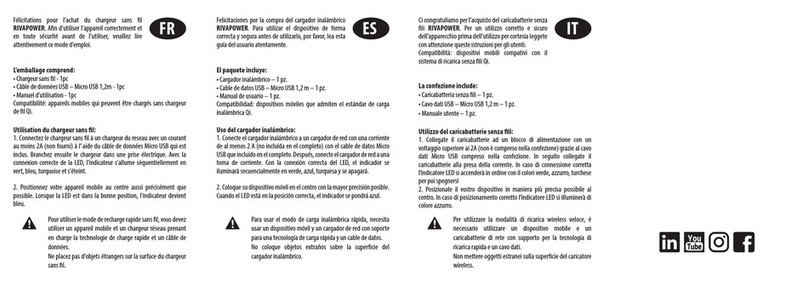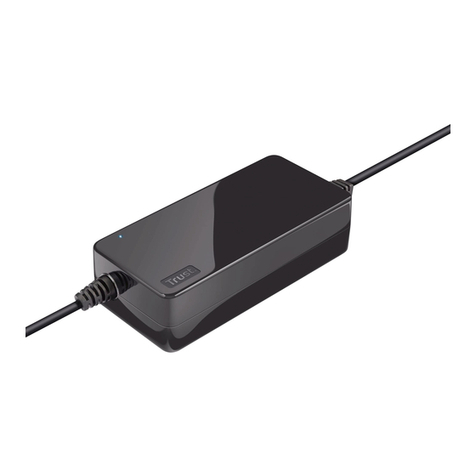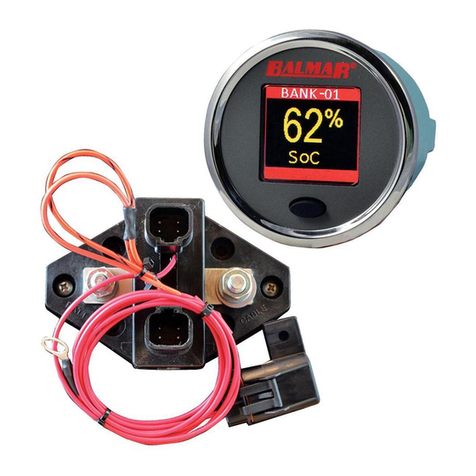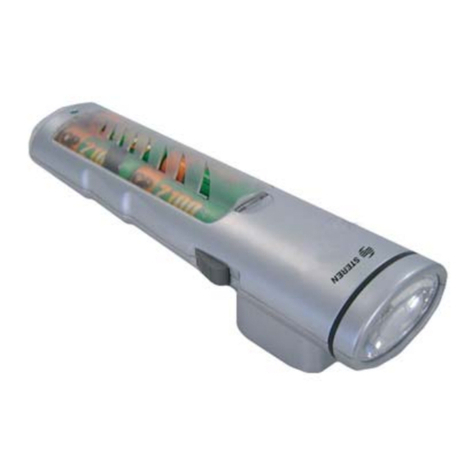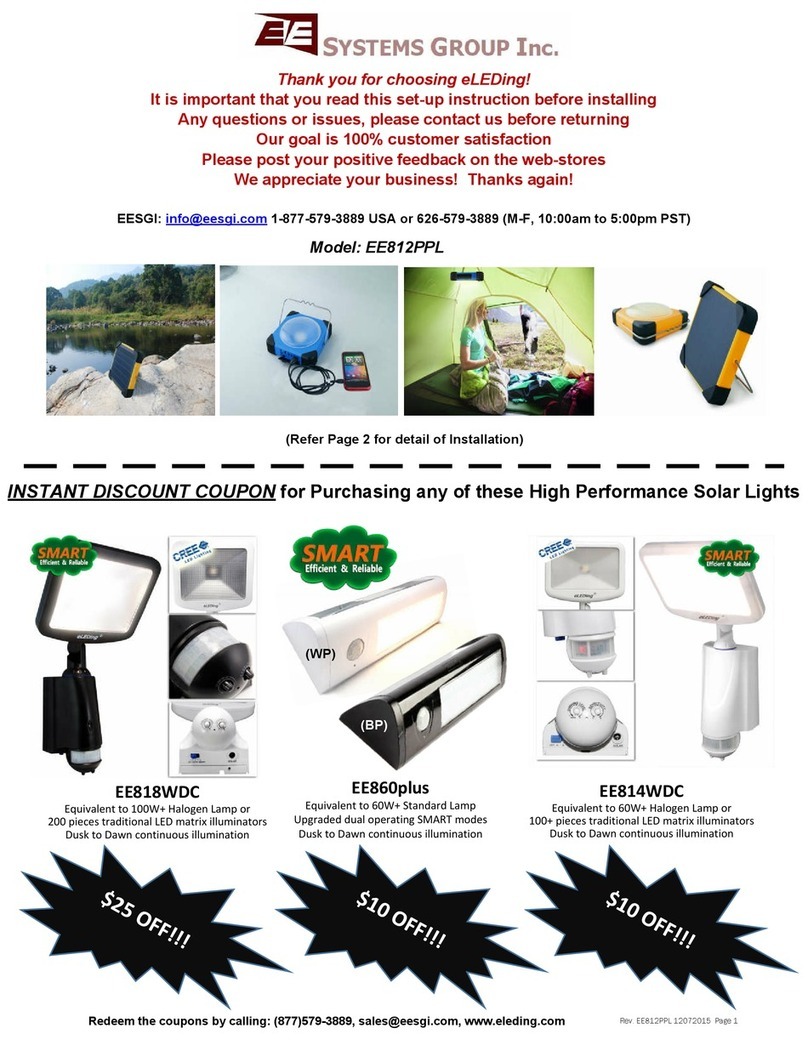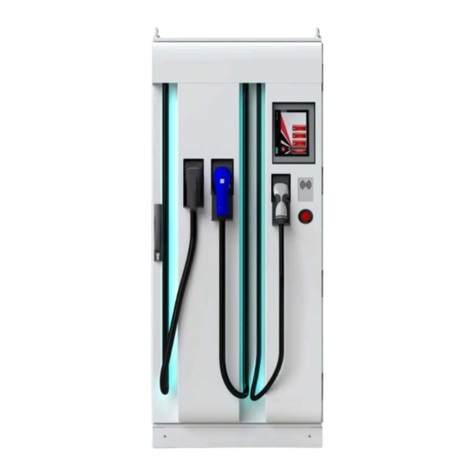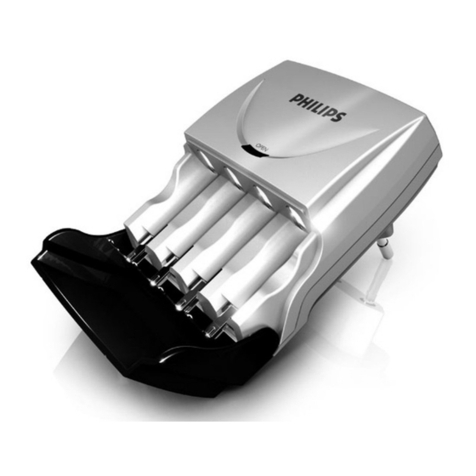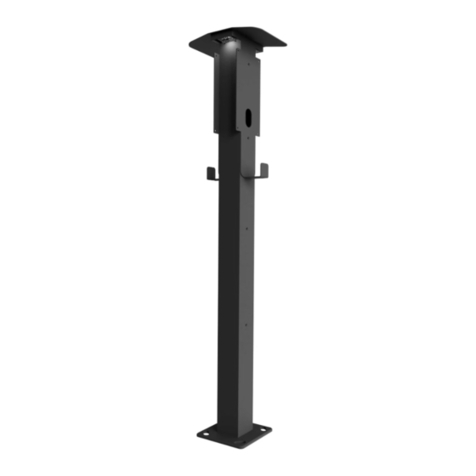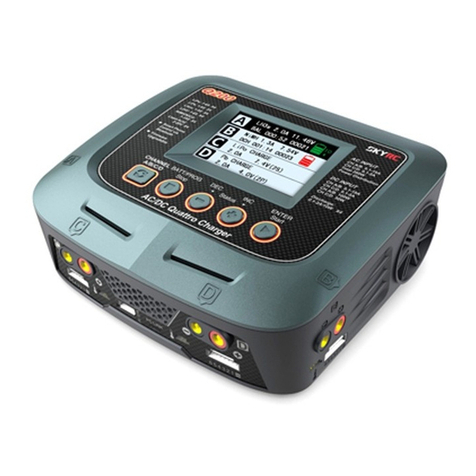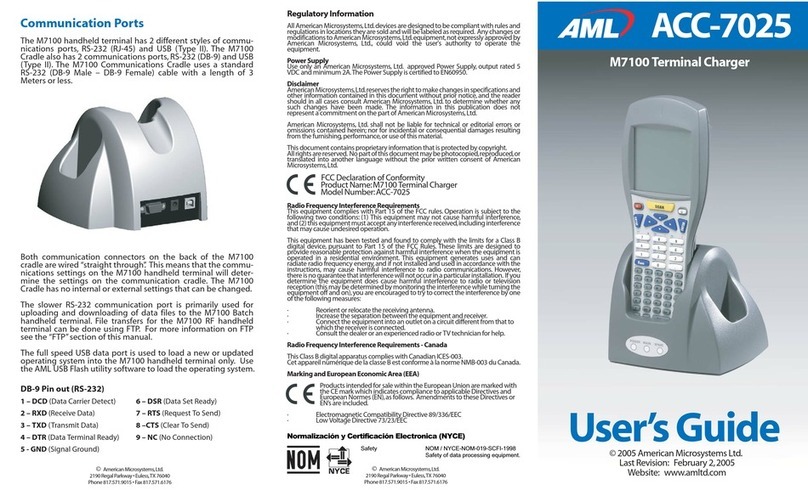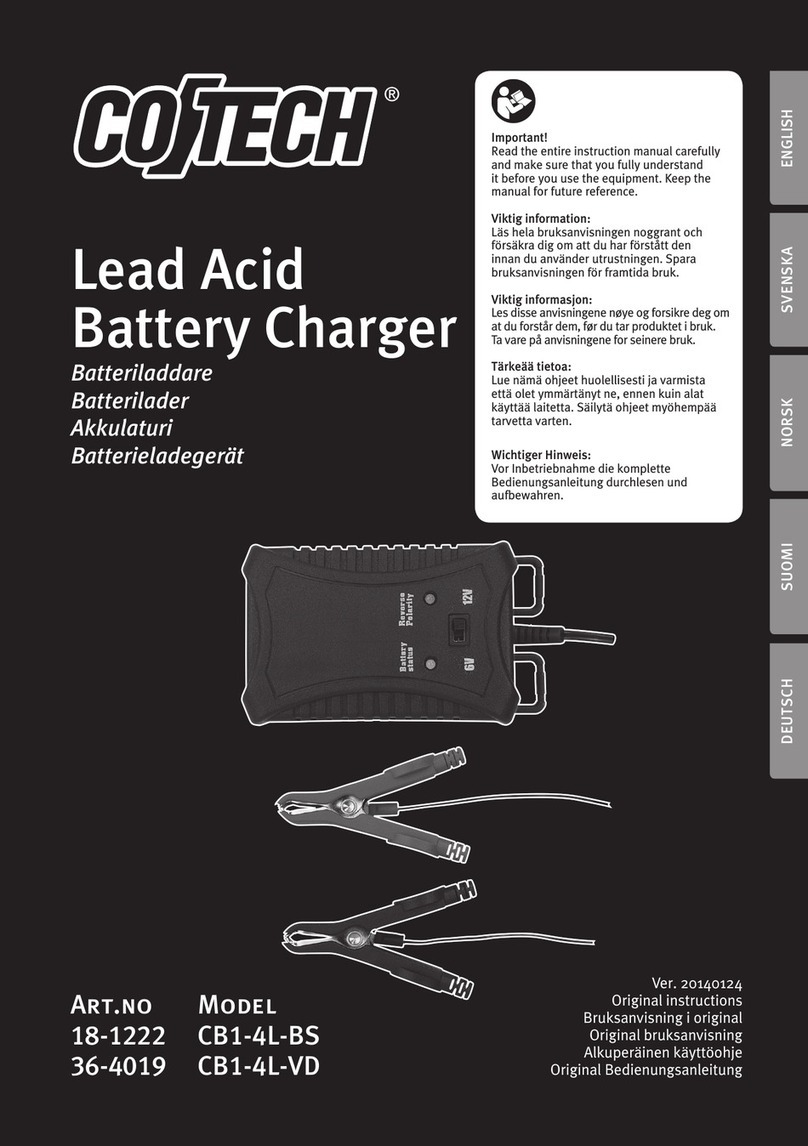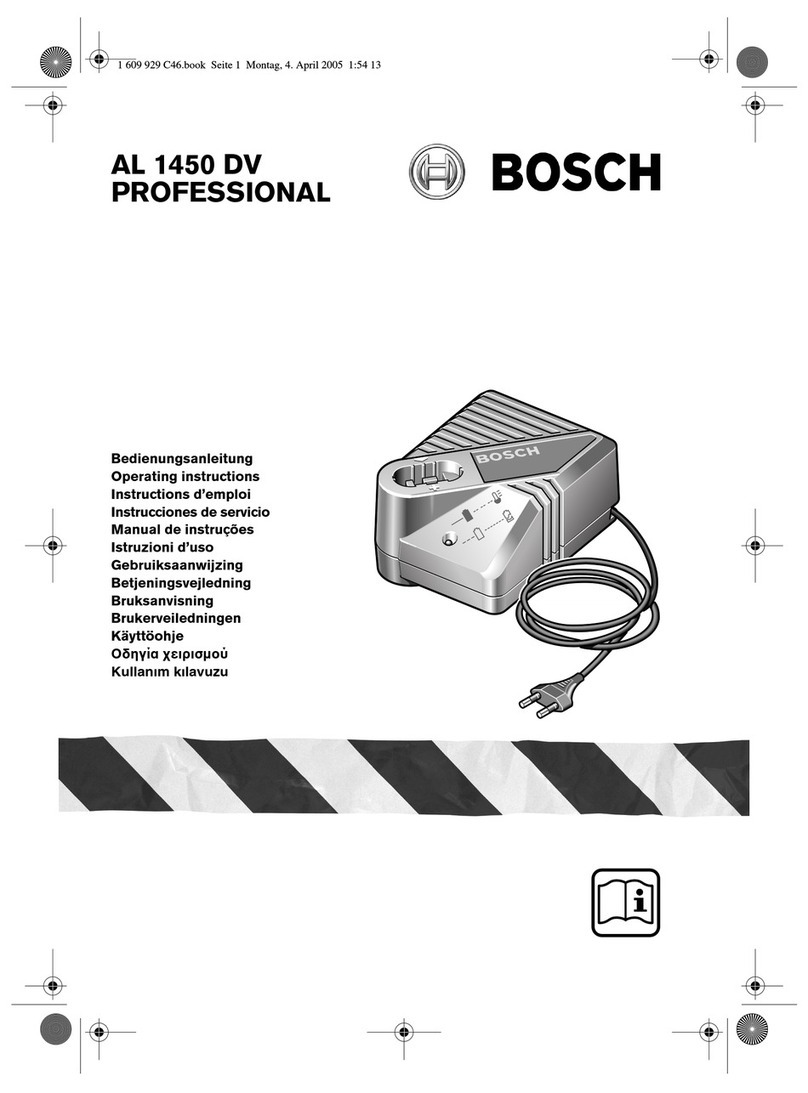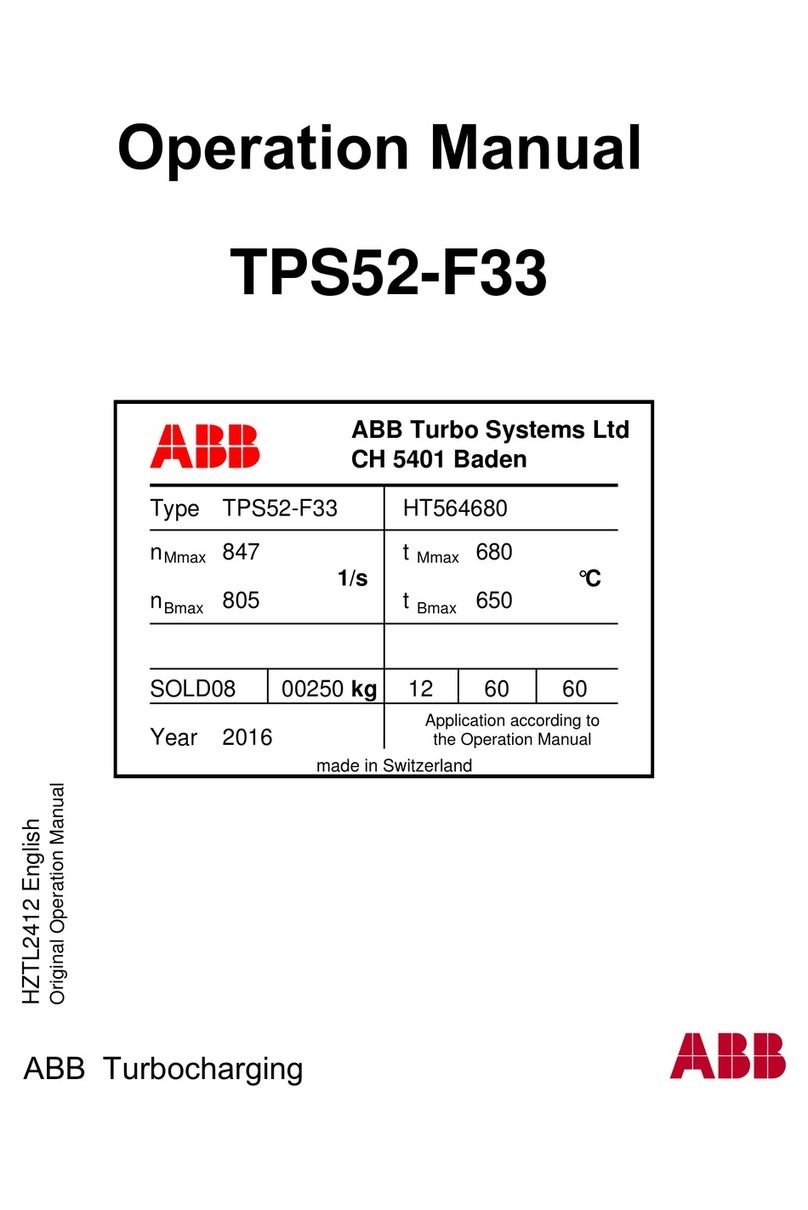Mäktig 710165 User manual

1
INTELLIGENT BATTERY
CHARGER/MAINTAINER
OWNER’S MANUAL
Read carefully and understand all ASSEMBLY AND
OPERATION INSTRUCTIONS before operating. Failure to
follow the safety rules and other basic safety precautions
may result in serious personal injury.
Part No
710165

2
Keep away from WATER – FIRE - SMOKE!
Recharge the unit before using it!
TABLE OF CONTENTS
1. INTRODUCTION ....................................................... 2
2. SAFETY PRECAUTIONS ……………………..…….... 3
3. AC ELECTRICAL CONNECTIONS........................... 5
PLUGGING IT IN …………………………..…………... 5
USING AN EXTENSION CORD ……….……….…….. 5
4. PREPARING TO CHARGE………............................ 6
CHARGER LOCATION …………………………..….... 6
BATTERY PREPARATION ..…………………..……... 6
BATTERY INSTALLED IN A VEHICLE ……………... 7
BATTERY REMOVED FROM VEHICLE ……..…….. 8
5. OPERATING INSTRUCTIONS ................................. 9
6. CHARGER FEATURES ............................................ 9
7. BATTERY CHARGING TIMES ................................. 10
8. MAINTENANCE AND CARE ………………………….. 11
1. INTRODUCTION
Congratulations on your purchase of this top quality Mäktig product!
Thank you for purchasing this top quality Mäktig Intelligent Battery
Charger/Maintainer. Your innovative 2 Amp charger/Maintainer keeps 12V
batteries charged while maintaining top performance. It works with Gel and
AGM batteries to maintain charge in stored batteries without having to
disconnect the battery from vehicles, boats, motorcycles and more.
Your unit offers reverse polarity/short circuit/over temperature protection and
features LED indicators to show status for charging, floating and reverse
polarity. It also includes ring terminal and clamp wiring.
This manual will explain how to use the charger safely and effectively.
Please read and follow these instructions and precautions carefully.

3
Three-stage battery charging:
STAGE 1 – Bulk Charge: Delivers maximum charging amperage to "wake
up" any serviceable 12V battery and allows for quick engine starting. When
battery reaches a maximum safe predetermined voltage, the charger will
automatically move into Stage 2 of the charging process.
STAGE 2 – Absorption Charge: Maintains the maximum possible charge at
a constant, safe, predetermined voltage. During this phase, the charging
voltage remains constant, while the actual charging current is reduced to
allow for the maximum proper internal chemical energy transfer. At the end
of Stage 2, the charger will automatically move to Stage 3.
STAGE 3 – Float Charge: Voltage is automatically maintained and reduced
to a predetermined level while current is adjusted for a safe, effective battery
charge.
The Automatic Float Charge feature is ideal for maintaining a battery. It
automatically tops off battery as needed, to keep battery fully charged all the
time.
2. IMPORTANT SAFETY INSTRUCTIONS
WARNING – RISK OF EXPLOSIVE GASES
WORKING IN THE VICINITY OF A LEAD-ACID BATTERY IS
DANGEROUS. BATTERIES GENERATE EXPLOSIVE GASES DURING
NORMAL BATTERY OPERATION. FOR THIS REASON IT IS OF THE
UTMOST IMPORTANCE THAT BEFORE EVERY USE, YOU READ AND
FOLLOW THE INSTRUCTIONS PROVIDED.

4
TO REDUCE RISK OF BATTERY EXPLOSION, FOLLOW THESE
INSTRUCTIONS AND THOSE PUBLISHED BY THE BATTERY
MANUFACTURER.
WARNING: Handling the cord on this product or objects associated with
the use of this product may expose you to lead. Wash hands after
handling.
Read all instructions and cautions printed on the battery charger, battery
and vehicle or equipment using battery.
Use the charger for charging lead-acid batteries only such as those
used in cars, trucks, motorcycles, boats, etc. It is not intended to supply
power to a low-voltage electrical system or to charge dry-cell batteries
commonly used in household appliances such as radios, toys, camera,
etc. Charging dry-cell batteries may cause them to burst and cause
injury to persons and damage to property.
Use of an attachment not recommended by the battery charger
manufacturer may result in the risk of fire or electrical shock.
Do not disassemble charger. Take it to a qualified service professional
if service or repair is required. Incorrect assembly may result in fire or
electrical shock.
To reduce risk of electrical shock, unplug the charger from the outlet
before attempting any maintenance or cleaning.
Do not expose charger to rain or snow.
Never charge a frozen battery. If battery acid becomes frozen, bring
battery to a warm area and allow it to thaw before you begin charging.
Never touch the battery clamps together when the charger is on. This
may cause a spark.
Never operate a charger if it has received a hard blow, been dropped or
otherwise damaged. Take it to a qualified professional for inspection.
Never pull out the plug by the cord when unplugging the charger as this
may cause damage to the cord or plug.
PERSONAL SAFETY PRECAUTIONS
Make sure that someone is within range of your voice to come to your
aid if needed while you work with or are near a lead-acid battery.
Wear complete eye and clothing protection when working with lead-acid
batteries.
Avoid touching your eyes while working with a battery.

5
Have plenty of fresh water and soap nearby for use in case battery acid
contacts your eyes, skin or clothing. If this happens, wash immediately
with soap and water then get medical attention.
Never smoke or allow an open spark or flame in the vicinity of the
battery or engine. Batteries generate explosive gases.
Take care not to drop any metal tool or object onto the battery. This
may result in a spark or short circuit across the battery or another
electrical device that may cause an explosion.
Remove all personal metal items, such as rings, bracelets, necklaces
and watches from your body while working with a lead-acid battery. A
battery can produce a short circuit current high enough to weld such
objects to metal, causing a severe burn.
Never attempt to charge a frozen battery.
Never overcharge a battery.
Always operate the battery charger in an open, well-ventilated area.
3. AC ELECTRICAL CONNECTIONS
PLUGGING IT IN
Your charger requires a 3-pin, grounded 120 V AC electrical wall outlet
receptacle installed according to local codes and ordinances.
WARNING: Never alter AC cord or plug provided. If it does not fit the
outlet, have a proper outlet installed by a qualified electrician. Improper
connection can result in a risk of fire or electric shock.
WARNING: Do not operate the charger if it has a damaged power cord
or plug. Have the cord replaced.
USING AN EXTENSION CORD
The use of an extension cord is not recommended. If an extension cord
must be used, follow these guidelines:
Make sure that the pins on the charger’s power cord fit firmly into the
extension cord and that the extension cord fits firmly into the receptacle.
Check that the extension cord is properly wired and in good electrical
condition.
Make sure that the wire size is large enough for its length and for the AC
ampere rating of the charger, as specified in the chart below.

6
MINIMUM RECOMMENDED EXTENSION CORD
Length of Cord, Metres (Feet) 7.6
(25) 15.2
(50) 30.5
(100) 45.6
(150)
AWG* Size of Cord 18 16 12 10
*AWG=American Wire Gauge
WARNING: Use of an improper extension cord could result in a risk of
fire and electric shock.
4. PREPARING TO CHARGE
CHARGER LOCATION
Do not expose charger to rain or snow.
Locate the charger as far away from the battery being charged as the
cables will permit.
Be sure to position the power cord to prevent it from being stepped on,
tripped over or damaged.
Never place charger directly above battery being charged. Gases from
the battery will corrode and damage the charger.
Never set a battery on top of a charger.
Never allow battery acid to drip on charger.
Always charge a battery in a well-ventilated area.
WARNING: Battery chargers may get hot during operation. Do not set
charger on flammable materials like carpeting, upholstery, paper, cardboard,
etc. Charger may damage leather, plastic and rubber.
BATTERY PREPARATION
If it is necessary to remove battery from vehicle to charge it, always
remove grounded terminal from battery first. Make sure all accessories
in the vehicle are OFF in order to prevent sparks.
Be sure that the area around the battery is well ventilated while being
charged.
Clean the battery terminals. Be careful to keep corrosion or battery acid
from getting in or around your eyes.

7
For batteries with removable vent caps, if required, add distilled water to
each cell until the battery fluid reaches the level specified by the battery
manufacturer. Do not overfill. For batteries without removable vent
caps, carefully follow the manufacturer’s charging instructions.
Study all of the battery manufacturer’s specific precautions and
recommendations for charging and for recommended rates of charge.
Make sure that you have a 12 V lead-acid battery. Determine voltage of
battery by referring to the vehicle owner’s manual. If the charger has an
adjustable charge rate, charge battery at the lowest rate first.
CHARGING A BATTERY INSTALLED IN VEHICLE
NOTE: A marine battery installed in a boat must be removed and charged
on shore. To charge it on board requires equipment specially designed for
marine use.
Connect and disconnect the DC output clamps only after removing the
AC plug from the electrical outlet.
Never allow the DC output clamps to touch each other. This may cause
a spark.
FOLLOW THESE STEPS WHEN BATTERY IS INSTALLED IN
VEHICLE. A SPARK NEAR BATTERY MAY CAUSE A BATTERY
EXPLOSION. TO REDUCE THE RISK OF A SPARK NEAR
BATTERY:
1. Position AC and DC cords to reduce the risk of damage by hood,
door, or moving engine part.
2. Stay clear of fan blades, belts, pulleys, and other parts than can
cause injury to persons.
3. Check polarity of battery posts. A positive (POS, P, +) battery post
usually has a larger diameter than a negative (NEG, N, -) post.
4. Determine which battery post is grounded (connected) to the
chassis. IT IS NORMALLY THE NEGATIVE POST.
5. Connecting to a negative-grounded system: Connect the positive
(red) clip from a battery charger to a positive (POS, P, +)
ungrounded post of battery. Connect the negative (black) clip to
vehicle chassis or engine block away from battery. Do not connect
clip to carburetor, fuel lines, or sheet-metal body parts. Connect to
a heavy gauge metal part of the frame or engine block.
Connecting to a positive-grounded system: Connect the
negative (black) clip from battery charger to negative (NEG, N, -)

8
ungrounded post of battery. Connect the positive (red) clip to
vehicle chassis or engine block away from battery. Do not connect
clip to carburetor, fuel lines, or sheet-metal body parts. Connect to
a heavy gauge metal part of the frame or engine block.
6. Connect charger AC supply cord to electric outlet.
7. Charge battery as outlined in OPERATION INSTRUCTIONS
section.
8. When disconnecting charger, disconnect AC cord, remove clip from
vehicle chassis, and then remove clip from battery terminal.
CHARGING A BATTERY REMOVED FROM VEHICLE
Connect and disconnect the DC output clamps only after removing the
AC plug from the electrical outlet.
Never allow the DC output clamps to touch each other. This may cause
a spark.
FOLLOW THESE STEPS WHEN BATTERY IS REMOVED FROM
VEHICLE. A SPARK NEAR BATTERY MAY CAUSE A BATTERY
EXPLOSION. TO REDUCE THE RISK OF A SPARK NEAR
BATTERY:
1. Check polarity of battery posts. A positive (POS, P, +) battery post
usually has a larger diameter than a negative (NEG, N, -) post.
2. Attach at least a 60cm 6-guage (AWG) insulated battery cable to a
negative (NEG, N, -) battery post.
3. Connect the positive (red) charger clip to the positive (POS, P, +)
post of battery.
4. Position yourself and the free end of cable as far away from battery
as possible, then connect the negative (black) charger clip to the
free end of cable.
5. Do not face battery when making final connection.
6. Connect charger AC supply cord to electric outlet.
7. Charge battery as outlined in OPERATING INSTRUCTIONS
section.
8. When disconnecting chargers, always do so in reverse sequence of
connecting procedure and break first connection while standing as
far away from battery as practical.

9
5. OPERATING INSTRUCTIONS
Using this battery charger is extremely simple. The built-in microprocessor
was designed to seamlessly work with all types of 12 V lead-acid batteries
so you don’t need to select whether your battery is conventional, low
maintenance, maintenance-free, deep cycle, gel cell or AGM.
First, prepare your battery and make output cable and AC power
connections following the precautions and instructions described in
“PREPARING TO CHARGE.” Once the AC cord is plugged in, the charger
will begin charging. The charger will then do everything else automatically.
The following section called “CHARGER FEATURES” will provide greater
detail about how your charger operates and some of its features.
6. CHARGER FEATURES
CONNECTION METHODS
This charger comes with 2 run connect charging leads for extra versatility –
standard clamps and ring terminals. The battery may be charged using any
of the two connection options.
WARNING: you can only select one charging method for charging at one
time.
2A CHARGE RATE
This charger is recommended for charging small batteries such as those
used in motorcycles, ATVs, snowmobiles, personal watercraft, lawn tractors
and golf cars. It is also suitable to maintain larger batteries such as those
used in automobile, marine and farm tractors.
OPTIONAL CONNECTION METHODS
This charger comes with 3 quick connect charging leads for extra versatility
– standard clamps, ring terminals and 12 V accessory plug. The battery
may be charged using any of these three connection options.
CHARGING INDICATOR
A yellow LED indicates that the battery is being charged.

10
AUTOMATIC SHUT OFF
The battery charger is designed to automatically shut off once battery
charging is complete to prevent overcharging. When charging is complete,
the CHARGED/MAINTAINING LED will illuminate and the charger has
switched to Maintenance mode.
MAINTENANCE MODE
Once charging is complete, the charger will automatically go into
Maintenance mode (also known as float mode monitoring). In this mode, the
charger keeps the battery fully charged by delivering a small amount of
current, when necessary, to keep the battery at peak charge.
REVERSE POLARITY PROTECTION
If the cables are incorrectly connected to the battery, the Reverse Polarity
indicator will illuminate. Note, the charger will not begin charging if the
Reverse Polarity indicator is lit.
OVERHEAT PROTECTION
The charger is designed to shut itself off if overheating is detected. Once
the charger cools down, it will resume charging automatically.
7. BATTERY CHARGING TIMES
The built-in intelligent microprocessor will continuously monitor and adjust
the charger to provide a fast, safe and efficient charge. Note that battery
charge times will vary depending on several factors including:
1. Battery State – If a battery has been only slightly discharged, it can be
charged in less than a few hours. This same battery could take up to 10
hours if very discharged.
2. Battery Rating – A higher rated battery will take longer to charge than a
lower rated battery under the same conditions. A battery is rated in
ampere-hours (Ah), reserve capacity (RC) and cold-cranking amps
(CCA).
3. Charge Rate – The charge rate is measured in amps. A battery
charged at a lower rate will take longer than a battery charged at a
higher rate. However, smaller batteries can be easily damaged by
charging at a rate which is too high for the capacity of the battery.

11
4. Temperature – Cold temperature will affect a batteries ability to accept
a charge. Charging in cold temperatures will increase the amount of
time required to charge a battery.
8. MAINTENANCE AND CARE
Clean cords and clamps each time you are finished using the charger.
Wipe off any battery fluid or debris that might have come in contact with
the clamps to prevent corrosion.
Store the power and output cable neatly to prevent damage.
Occasional cleaning of the battery charger case with a soft cloth will
help protect the finish.
Always unplug the charger when not in use.
Keep the charger stored in a cool, dry place.
Table of contents
Other Mäktig Batteries Charger manuals

